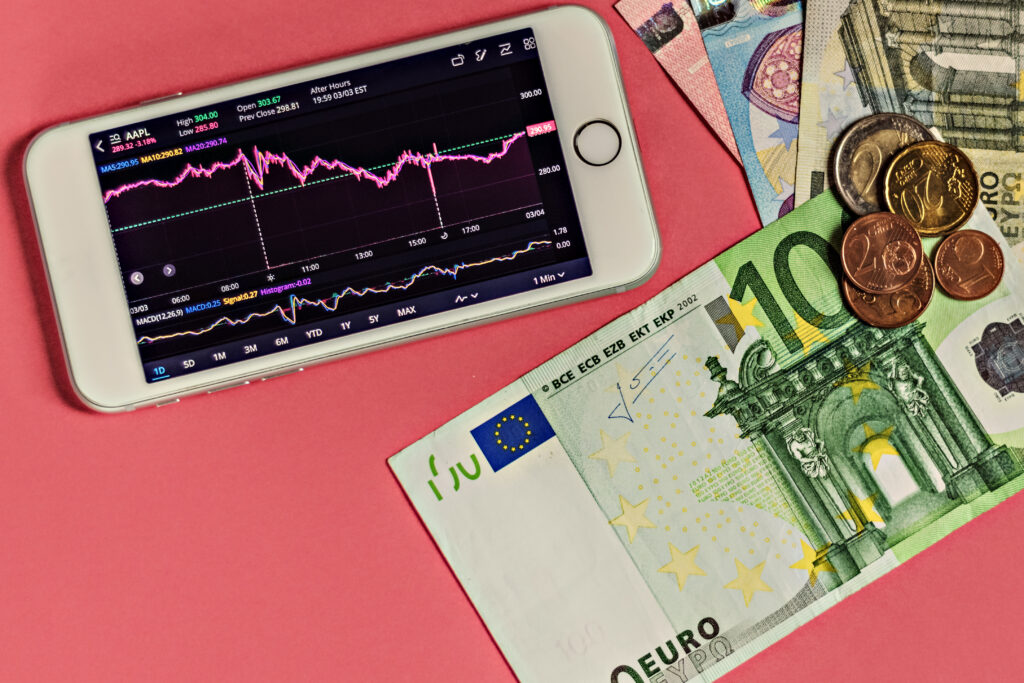Forex Market Dynamics in the Era of Global Digital Currency Adoption
Introduction
The global financial system is entering a new phase driven by technology and innovation. The rise of digital currenciesand active participation from central banks are reshaping how economies function. This ongoing shift directly impacts digital currency and Forex, influencing valuation, liquidity, and cross-border transactions.
The forex market, once dominated by traditional monetary systems, is adapting to this digital transformation. Cryptocurrencies, stablecoins, and central bank digital currencies (CBDCs) are redefining how traders and institutions perceive currency stability and value. These developments are not just technological; they signal a structural change in global finance.
This article examines the evolving relationship between digital currency and Forex, exploring how new financial technologies influence exchange rates, trade efficiency, and global investment strategies. All insights are supported by verified research papers, central bank reports, and market data for reliability and accuracy.
The Digital Currency Revolution
The concept of money is changing. What began with physical notes and coins is evolving into purely digital currencies. These assets now serve as legitimate mediums of exchange and reliable stores of value. The digital currency and forex connection emerges as traders adapt to faster, transparent, and technology-driven systems.
Digital currencies enable quick, low-cost transactions that support both domestic and international markets. They reduce dependence on cash and improve financial inclusion, making them essential in a connected economy. As countries adopt these systems, their influence spreads across global markets.
This transformation also impacts forex trading behaviour. The volatility of cryptocurrencies and the controlled design of CBDCs add new dimensions to market analysis. As digital finance grows, digital currency and Forex together represent a critical frontier for innovation and monetary evolution.
Central Banks Embrace Digital Currencies
Central banks across the world are showing serious interest in digital currencies. These institutions see digital money as a way to modernise payments and strengthen financial systems. Their role in digital currency and Forex integration is crucial because policy decisions now affect both traditional and digital markets.
The People’s Bank of China (PBOC) stands at the forefront of this movement. Its Digital Currency Electronic Payment (DCEP) project aims to modernise the yuan and improve international trade efficiency. Similarly, the European Central Bank and the U.S. Federal Reserve are researching their own versions of digital money.
By issuing central bank digital currencies, nations can enhance transparency, reduce transaction costs, and improve monetary control. However, adoption also brings challenges such as cybersecurity risks, privacy concerns, and regulatory uncertainty. Still, most global financial authorities agree that digital currency and Forex will continue to converge as digital systems mature.

he PBOC’s ambitious project, as outlined in a research paper it has published, seeks to reimagine the concept of money for the digital age. Among its objectives are the creation of a more efficient and secure medium of exchange and the empowerment of central banks with enhanced control over the money supply. These objectives underscore the fundamental transformation that digital currencies, in the form of central bank digital currencies (CBDCs), are poised to bring about in the financial landscape.
Influence on Forex Markets
The profound transformation brought about by the adoption of digital currencies and the rise of cryptocurrencies is most palpable in the forex market. Forex, a global marketplace where currencies are exchanged, has long been a cornerstone of the financial world. Now, it stands on the precipice of change, as digital currencies infiltrate its traditional corridors.
The Impact on Currency Valuation
One of the foremost ways through which digital currencies influence the forex market is by exerting influence on currency valuation. A well-implemented CBDC, underpinned by strong economic fundamentals and robust technological infrastructure, can render a nation’s currency more alluring to international investors. This heightened attractiveness can potentially lead to an appreciation in the value of that currency. However, it is essential to recognize that the magnitude of this effect is contingent on various factors, including the economic stability of the country and the extent of CBDC adoption.
As we embark on this exploration of how digital currencies and the interest of central banks are reshaping forex markets, it becomes apparent that we are entering uncharted territory. The traditional boundaries of finance are blurring as the digital revolution unfolds before us. To fully comprehend the nuances of this evolving landscape, we must delve deeper into the intricacies of central bank digital currencies and the disruptive force of cryptocurrencies. In the subsequent sections of this article, we will traverse these uncharted waters, drawing on well-sourced insights to navigate the currents of change and uncover the full spectrum of their impact on forex market dynamics.
Read our article on Archaeological Discoveries
Central Banks and Digital Currencies
Central banks, traditionally responsible for managing a nation’s monetary policy, have embarked on a journey towards embracing digital currencies. This transition has gained considerable momentum in recent years, with the intention of modernizing the financial landscape and adapting to a digital era. A noteworthy example of this transformation is the People’s Bank of China (PBOC), which has been at the forefront of developing a digital version of the Chinese yuan, known as the Digital Currency Electronic Payment (DCEP). Through this innovation, central banks aim to revolutionize the way currency is utilized, emphasizing efficiency, security, and a heightened degree of control over the money supply.

The PBOC’s Exploration of Digital Currency
The PBOC’s initiative, as detailed in a research paper they have published, outlines the multifaceted objectives behind the creation of the DCEP. One primary goal is to provide a digital currency that can serve as a more efficient and secure medium of exchange. By leveraging blockchain technology, the DCEP aims to streamline transactions, reducing the time and cost associated with cross-border and domestic payments. This increased efficiency aligns with the global trend towards a digital economy, where rapid and seamless transactions are essential.
Additionally, central banks like the PBOC are motivated by the desire to gain greater control over their nation’s money supply. Through the issuance of a digital currency, central banks can have real-time insights into currency movements, aiding in the implementation of monetary policy. This enhanced oversight allows for more precise adjustments to interest rates and money supply, thereby contributing to economic stability.
The Influence of CBDCs on Forex Markets
The adoption of central bank digital currencies (CBDCs) carries substantial implications for forex markets, where currencies are traded on a global scale. The impact of CBDCs on forex dynamics can be viewed from various angles:
- Demand and Supply Dynamics: CBDCs can significantly influence the demand and supply dynamics of a country’s currency. A well-executed CBDC, backed by a stable economy and efficient infrastructure, can make a nation’s currency more appealing to international investors. This increased demand can potentially lead to an appreciation in the currency’s value, affecting forex rates.
- Exchange Rate Volatility: The extent of CBDC adoption and market sentiment play a pivotal role in determining exchange rate volatility. As CBDCs gain prominence, investors may reallocate their portfolios, affecting forex markets. It is essential to monitor market conditions and central bank policies to anticipate potential fluctuations.
- Global Trade: CBDCs can streamline cross-border transactions, making international trade more efficient. This could lead to increased trade between nations, potentially impacting forex markets as trading volumes rise. Businesses engaged in international trade may find CBDCs to be a more favorable medium for conducting transactions due to their speed and cost-effectiveness.
However, it is important to note that the impact of CBDCs on forex markets is not uniform across all countries and situations. Factors such as a nation’s economic stability, the extent of CBDC adoption, and global economic conditions will influence the magnitude of these effects. Additionally, the forex market is highly complex, influenced by numerous variables beyond digital currencies.
Cryptocurrencies and Forex Market Volatility
The emergence of cryptocurrencies, exemplified by Bitcoin and Ethereum, has ushered in a new era of financial innovation, and this transformation is reverberating throughout the forex market. Cryptocurrencies, characterized by their highly speculative nature and rapid price fluctuations, have added an element of dynamism and unpredictability to the forex landscape. This article delves into the interplay between cryptocurrencies and forex markets, focusing on their role in introducing heightened volatility to certain currency pairs.
Cryptocurrencies: The Pioneers of Volatility
Cryptocurrencies have garnered immense attention due to their remarkable price volatility. These digital assets, powered by blockchain technology, offer a decentralized and peer-to-peer method of transferring value. Their appeal lies in the potential for substantial, short-term gains, which attracts traders seeking opportunities in the forex market.
Cryptocurrency trading pairs, such as BTC/USD (Bitcoin/US Dollar), have become a prominent fixture in the forex market. Traders have been drawn to these pairs for various reasons, including the ability to hedge against traditional currency exposure and to speculate on price movements. However, the inclusion of cryptocurrencies in forex trading has not been without consequences, particularly in terms of increased volatility.
Volatility in Forex Pairs Containing Cryptocurrencies
The integration of cryptocurrencies into forex trading has contributed to heightened volatility in certain currency pairs, especially those involving cryptocurrencies. Several factors contribute to this phenomenon:
- Speculation: Traders often engage in cryptocurrency trading with a speculative mindset, looking for quick gains. Their buy and sell decisions can lead to rapid price fluctuations in both cryptocurrencies and the associated forex pairs.
- Lack of Intrinsic Value: Cryptocurrencies, unlike traditional fiat currencies, lack intrinsic value and are not backed by a central authority. This absence of underlying assets or regulation can lead to erratic price movements.
- Market Sentiment: The cryptocurrency market is heavily influenced by market sentiment, news, and social media trends. A single tweet or news article can trigger significant price swings, impacting the forex market.
- Liquidity Challenges: Cryptocurrency markets tend to have lower liquidity compared to major forex pairs. This can exacerbate price swings, as even a moderate influx or outflow of capital can lead to substantial price changes.
For forex traders and investors, staying informed about the cryptocurrency market’s developments is essential. Integrating this knowledge into trading strategies can help mitigate risks associated with heightened volatility. Additionally, understanding the unique dynamics of cryptocurrency markets, such as trading hours, order types, and market sentiment, can be advantageous when dealing with forex pairs containing cryptocurrencies.
Managing Volatility: A Balancing Act
While the inclusion of cryptocurrencies in forex trading has introduced volatility, it also offers opportunities for diversification and profit. Traders should approach these markets with caution, recognizing the potential for rapid gains and losses. Risk management strategies, including setting stop-loss orders and position sizing, are crucial for navigating the increased volatility associated with cryptocurrency-influenced forex pairs.
In conclusion, the integration of cryptocurrencies into the forex market has undeniably injected a new dimension of volatility. Traders and investors must adapt to this evolving landscape, staying well-informed and incorporating cryptocurrency market knowledge into their trading strategies. By doing so, they can harness the potential opportunities while effectively managing the inherent risks associated with this dynamic intersection of traditional and digital finance.
Currency Valuation and Global Trade
The global economic landscape is undergoing a profound transformation driven by digital currencies and cryptocurrencies, with substantial implications for currency valuation and international trade. This article explores the intricate relationship between these factors, shedding light on how digital currencies are shaping the competitive dynamics of global markets.

Streamlining Cross-Border Transactions with CBDCs
The adoption of Central Bank Digital Currencies (CBDCs) represents a significant stride towards improving the efficiency of cross-border transactions. CBDCs are designed to operate on blockchain technology, enabling swift and secure international payments. This technological advancement holds the potential to reduce transaction costs and processing times, making it easier for businesses engaged in international trade.
One notable advantage of CBDCs is their ability to facilitate seamless cross-border transactions, allowing businesses to engage in global trade with greater ease. Reduced friction in international payments can enhance the competitiveness of a country’s goods and services in the global market, potentially leading to increased exports.
The Challenge of Cryptocurrency Volatility
However, the integration of cryptocurrencies into international trade introduces a unique set of challenges. The hallmark of cryptocurrencies is their price volatility, which can pose significant risks for businesses involved in cross-border transactions. A sudden and substantial drop in the value of a cryptocurrency, such as Bitcoin, can result in considerable financial losses for exporters and importers.
To mitigate this risk, businesses may choose to implement strategies to hedge their cryptocurrency exposure. This can involve using financial instruments like futures contracts to protect against adverse price movements. By doing so, businesses aim to safeguard their profit margins and financial stability in an environment characterized by cryptocurrency price fluctuations.
Stablecoins: A Solution to Volatility
In response to the volatility of cryptocurrencies, stablecoins have emerged as a viable alternative for international trade. Stablecoins are digital currencies that are typically pegged to stable assets, such as the US dollar or other reserve currencies. This pegging mechanism ensures that stablecoins maintain a relatively stable value, mitigating the price volatility associated with cryptocurrencies like Bitcoin or Ethereum.
Stablecoins offer a middle ground between traditional fiat currencies and volatile cryptocurrencies, making them an increasingly preferred choice for cross-border transactions. Their price stability provides businesses with a reliable medium of exchange, reducing the uncertainty and risk associated with international trade.
Digital currencies and cryptocurrencies are reshaping the landscape of currency valuation and international trade. Central Bank Digital Currencies (CBDCs) are streamlining cross-border transactions, enhancing the competitiveness of nations in the global market. However, the volatility of cryptocurrencies introduces challenges for businesses engaged in international trade, necessitating risk mitigation strategies like hedging.
Stablecoins, with their price stability and compatibility with blockchain technology, are emerging as a practical solution to the volatility problem. As the global economy continues to evolve, businesses and policymakers must carefully consider the role of digital currencies in international trade, adapting strategies and regulations to harness the benefits while managing the associated risks. In this dynamic environment, staying informed and adaptable is key to thriving in the era of digital finance.
Conclusion
The forex landscape is rapidly evolving as digital currencies and advanced genomic-driven economic shifts reshape global finance. The integration of technology, innovation, and scientific investment is redefining how nations manage value, trade, and monetary policy. These transformations highlight the growing connection between scientific progress, biotechnology funding, and currency performance.
Healthcare and genomics investment not only enhance national productivity but also influence currency valuation through trade competitiveness and investor confidence. Stable economic systems that embrace digitalisation and innovation are likely to experience more resilient and appreciated currencies.
For traders and investors, adaptability remains crucial. Understanding how new technologies, biotech advancements, and digital assets interact within the forex ecosystem will define success in this changing era. As the boundaries between science, economics, and finance continue to blur, the global forex market enters a new phase — one driven by innovation, research, and the pursuit of long-term stability.
Read our latest article on Virtual Reality
FAQs
- What are digital currencies, and how are they transforming the financial landscape?Digital currencies are digital representations of value that are redefining how financial transactions occur. They are reshaping the traditional concept of currency by providing efficient and secure means of exchange in the digital age.
- Why are central banks showing interest in digital currencies?Central banks are exploring digital currencies to modernize their monetary systems. They aim to create more efficient payment systems, enhance security, and gain greater control over the money supply.
- Can you provide an example of a central bank’s efforts in adopting digital currency?The People’s Bank of China (PBOC) is actively developing a digital version of the Chinese yuan, known as Digital Currency Electronic Payment (DCEP), which is a notable example of a central bank’s pursuit of digital currency.
- How do central bank digital currencies (CBDCs) impact currency valuation in the forex market?CBDCs can influence currency valuation by making a nation’s currency more attractive to international investors, potentially leading to an appreciation in its value. However, this effect depends on various factors, including economic stability and CBDC adoption.
- What role do cryptocurrencies play in the forex market?Cryptocurrencies like Bitcoin and Ethereum introduce volatility to the forex market. They are highly speculative and can lead to rapid price fluctuations in certain currency pairs.
- How do cryptocurrencies impact forex trading pairs involving them, such as BTC/USD?Cryptocurrencies’ inclusion in forex trading can increase volatility in those pairs. Traders often use cryptocurrencies for hedging and speculation, causing sudden and substantial price movements.
Click here to read more on Digital Currencies




